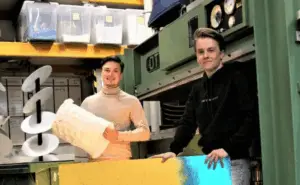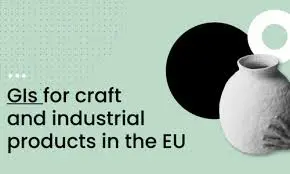TRNL20220926005 – Dutch social housing corporation is looking for solutions to reduce heatloss in façade openings as efficiently as possible.
A Dutch social housing corporation is looking for partner who can offer solutions to reduce heatloss in façade openings as efficiently as possible. They are looking for partners that can offer a solutions or ideas (from TRL 5-8) to reduce heatloss on their housing stock.
Full description
Housing corporations have a big challenge ahead of them. In 2050 all houses need to be Co2 neutral. Also, houses with a bad energy label can’t be rented out anymore from 2030 onward. Besides this the prices of energy have been rising a lot. This results in our tenants not having enough budget to comfortably warm their houses. It is therefore pressing to make a change quickly.
A big part of the warmth in a house is lost at façade openings. With the façade we mean windows, doors, frames, glass and panels. The insulating effect of the materials as well as the infiltration of air through the cracks are cause for a lot of energy loss and discomfort.
The current solutions are: Replace the frame with triple glass or replace the old glass with HR++ glass. Also, old doors are replaced with new insulated ones. These solutions have two big problems: 1. The solution costs a lot of money. 2. The solution has a large impact on the residents, because the installers have to work in the home for a long time.
This Dutch social housing corporation is looking for cost effective solutions that solves one of these problems. They are also open to other creative solutions. The solutions should have a Technology Readiness Level (TRL-level) of 5 – 8. This is a scale that is used to classify the level of product development. In this challenge that means they are looking for an idea that classifies as somewhere between “ready to test in a test environment” and “a product that is operational”.
The end goal is to implement the innovation in the houses of the corporation. With that, the corporation will be the buyer of the product.
Next to that, the corporation works together with testing a facility at a university in the Netherlands together with other stakeholders. This facility aims to be a accelerator of innovation for a sustainable building future. The focus is on three themes: Sustainable construction and renovation, Future energy system and Climate-adaptive city. Therefore the corporation can provide help and feedback in multiple areas and connect the contender with valuable contacts like product developers, suppliers, providers of subsidies etc.
IMPORTANT NOTE: This technology request is part of an innovation challenge and is published on an open innovation platform from the 3rd of October and will close on the 6th of November. If an organization does express interest in collaboration with this company before closing date, it will be guided through this open innovation platform and be introduced to the company’s experts. Mind that posts on this platform are not confidential. Next step is that the company will select the SMEs with whom they would like to cooperate in the development of the solution.
Advantages and Innovations:
This challenge offers multiple unique opportunities, depending on the level of development of the innovation. The opportunities are:
A representative testing location
A pilot project within a few houses owned by this Dutch housing corporation
Application of the innovation on all the houses is pilot is succesfull.
1. Testing
They can offer a testing location for sustainable building and construction. They have built three replica’s of some houses from the 70’s. The location of this test site is at the campus of a big university in the Netherlands. In these houses they can offer offer the chance to test innovations in a representative environment. Advantage is that in this environment, fewer rules apply and making mistakes is allowed. It is therefore the ideal environment to develop a product fast.
Also, the test location provides an opportunity to create a useful network and get some publicity. Already, some young companies have received quite a boost by participating.
2. Pilot
If the test passes, the corporation will purchase a first batch of products. A pilot is started in approximately 50 homes owned by by them. This offers an opportunity to scale up the product.
3. Application on a larger scale
If the pilot is successful, the coporation is seriously interested in signing a contract as the first customer. The aim here is to install the product in all homes owned by the corporation.
Expected role of partner sought:
The company is looking for companies that offers solutions to this challenge . Six criteria are important to scale up to all off our houses at a later moment. During the testing phase we can help to develop the product to suite the criteria more closely.
Six criteria:
– Proven worth: The innovation has proven to work better than current options for the problem.
– Scalabillity: The innovation can potentially be scaled up to cover all the houses owned by the corporation
– User Friendly: The innovation is user friendly. That means it causes little nuisance for the lived-in houses. Also, and even more important it is friendly for our residents to use.
– Applicable: The innovation must be “theoretically” applicable to 10% of our housing types.
– Maintanance: The innovation has the same or preferably less maintenance than similar products in the market.
– Circularity: The product uses renewable materials.
For more information you can contact:
Nils Haarman – mailto:nils.haarman@rvo.nl



